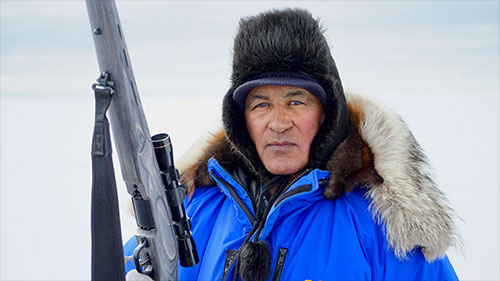
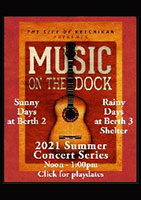





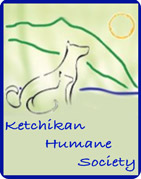



 Contact Contact 
 Webmail
Letters Webmail
Letters
 News Tips News Tips
 Copyright Info Copyright Info
 Archives Archives
Quick News
Search
 Alaska Alaska
 Ketchikan Ketchikan
 SE Alaska SE Alaska
Columns
- Articles
 Dave Kiffer Dave Kiffer
 Money Matters Money Matters
Historical
Ketchikan
 June Allen June Allen
 Dave
Kiffer Dave
Kiffer
 Louise
B. Harrington Louise
B. Harrington
Sports
 Ketchikan Links Ketchikan Links
Public Records
 FAA Accident Reports FAA Accident Reports
 NTSB
Accident Reports NTSB
Accident Reports
 Court Calendar Court Calendar
 Recent Filings & Case Dispositions Recent Filings & Case Dispositions
 Court Records Search Court Records Search
 Sex Offender Reg. Sex Offender Reg.
 Public Notices Public Notices
 Alaska Recall Alerts Alaska Recall Alerts
 Recalls.gov Recalls.gov
 AST Daily Dispatch AST Daily Dispatch
 KTN
Police Reports KTN
Police Reports
 Juneau Police Reports Juneau Police Reports
Weather,
Webcams
 Today's
Forecast Today's
Forecast
 KTN
Weather Data KTN
Weather Data
 AK
Weather Map AK
Weather Map
 AK Weathercams AK Weathercams
 AK Earthquakes AK Earthquakes

|
|

Sunday - Tuesday
September 12 & 14, 2021
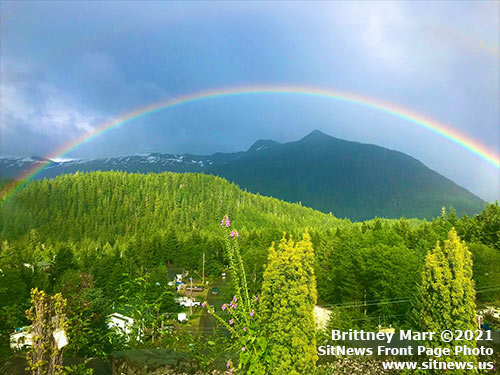
Ketchikan is often a city of rainbows.
SitNews Front Page Photo by BRITTNEY MARR©2021
To have your photo(s) featured on the front page,
email your photo(s) to editor@sitnews.us |
| Alaska: Officials comment on today's PFD decision Posted & Edited By MARY KAUFFMAN - Today, the Alaska Senate passed House Bill 3003, which provides a $1,100 permanent fund dividend. Quoting a news release from the Alaska Senate Democrats, this fullfills the promise that the legislature would, once again, provide an affordable PFD to Alaskans.
Senator Democratic Leader Tom Begich (D-Anchorage) in a prepared statement wrote, “With today’s actions, the legislature fulfilled, again, its obligation to provide a dividend to Alaskans. It may not be the amount we all want, but it is what we can afford. I appreciate my colleagues’ willingness and desire to find solutions and come to a compromise."
Senator Begich concluded his statement writing, “As we all know, our work is not done. Progress is ongoing with the Fiscal Policy Working Group, and today’s actions are just one part of a successful effort towards a fiscal plan. Hard decisions are still before the legislature, and now that this year’s dividend is behind us, we can focus strictly on the future of our state’s financial stability.”
The bill heads to the governor's desk.
Following the Alaska Legislature’s decision today to appropriate only $1100 for the 2021 Permanent Fund Dividend, Governor Mike Dunleavy release a prepared statement. Although the governor is not in agreement with today's action on the PDF, he would not veto this bill but called another special session.
Governor Dunleavy wrote, “In a year when the Alaska Permanent Fund earned almost $20 billion, and the total value of the fund exceeds $83 billion, there are members of the legislature that would love to eliminate the PFD, and grow government, regardless of the harm it would cause Alaskans. Our state is still dealing with the economic ramifications of this virus, the distractions of employment issues, the lack of available workers and the disruptions to the supply chains. While we continue to debate the fiscal future of this state, the people of Alaska need help now." - More...
Tuesday PM - September 14, 2021
|
Ketchikan Regular Election October 05, 2021 - Tuesday
Early & In-Person Absentee Voting Begins September 20, 2021
|
For over two decades, SitNews has provided a section at no cost for all candidates for the local Ketchikan Assembly, School Board, City Council, and Ketchikan Mayor
All candidates are encouraged to participate and provide your future constituents with your candidate's statement to included this required information:
1. Why you are running for office.
2. Experience and education.
3. Identify at least two significant issues and challenges facing our community and your ideas on how these issues could be addressed.
(Please do not just say you will be open to public input. Be specific about the issues and challenges and your specific ideas to address.)
4. Photograph.
5. Email your information in text format and photos (jpg) to editor@sitnews.us
Additional comments are allowed.
Please email your candidate's information for publication by September 18, 2021. Candidate's information will be published as received and will not be edited by the SitNews' editor. (Posted: Sept. 11, 2021 - Invitations to Participate emailed to all candidates on September 11, 2021) |
| Ketchikan Borough Assembly - 3 Year Term (2 Seats Open) |
 |
Darlene d-Svenson
Filed 08/23/21
Response
09/13/21 |
 |
Jason Button
Filed
08/24/21
Response
|
 |
Grant EchoHawk
Filed 08/24/21
Response
|
 |
Carlos Weimer
Filed 08/25/21 |
 |
Jaimie Palmer
Filed 08/25/21 |
|
|
| Ketchikan School Board - 3 Year Term (3 Seats Open) |
 |
Nicole Anderson
Filed 08/24/21 |
 |
Keenan Sanderson
Filed 08/24/21 |
 |
Tom Heutte
Filed 08/25/21 |
 |
Ali Ginter
Filed 08/25/21
Response
09/12/21
|
 |
Stephen Bradford
Filed 08/25/21 |
|
|
| Ketchikan City Mayor - 3 Year Term (1 Seat Open) |
 |
Dave Kiffer
Filed 08/02/21
Response
09/13/21
|
|
|
|
|
| Ketchikan City Council - 3 Year Term (2 Seats Open) |
 |
Jai Mahtani
Filed
08/02/21
Response
09/14/21
|
 |
Janalee Gage
Filed 08/06/21
Response
09/13/21
|
 |
Lallette Kistler
Filed 08/09/21 |
| |
Printed ballots for inspection for the October 5, 2021 election will be available September 15, 2021.
Early or Absentee-In-Person Voting Begins September 20, 2021. Last day for Early or Absentee In-Person Voting is October 04, 2021.
KGB Election Information Click Here
City of Ketchikan Election Info Click Here |
|
Ketchikan Historical: When Fur Farming was Alaska's third biggest industry; Hundreds of farms dotted islands in Southeast By DAVE KIFFER - Every so often, when exploring a remote island in the Alexander Archipelago, one can come upon aset of puzzling remains.
Fences and wire and sometimes dozens of rotting cages near broken down houses or occasionally larger buildings. It is the remains of what once was the third largest industry in Alaska. One that burst on the scene in the 1920s and had pretty much disappeared in barely a decade, leaving only the debris of numerous get rich quick schemes that never did.
In the 1920s, one of the most common mammals in Southeast Alaska wasn't even a native species. There were more than 10,000 arctic or blue foxes in hundreds of small island farms from Dixon Entrance to upper Lynn Canal and Yakutat. Their forebearers had been brought south from northern Alaska to breed and make money.
Later, many of the farms would switch to native mink species because of changes in public taste after the Depression and the simple fact that mink were smaller. easier to handle, and lent themselves to larger, cage farms.
A booming world-wide economy in the so-called Roaring Twenties fueled a market for fur and that market drove hundreds of Alaskan entrepreneurs into fur farming, an industry that promised "get rich quick" but ended up delivering on "get poor quicker" before it flamed out when the Great Depression hit in the 1930s. The fur farm industry boomed and then busted when pelt prices dropped by 90 percent worldwide.
The fur industry was what had originally attracted Russians to Alaska in the 1700s but while there was some hunting of Aleutian and southwestern foxes, most of the Russian interest was in fur seals. As the fur seal and sea otter numbers began plummeting in the early 1800s, the first rudimentary fox farms began to pop up in places like Kodiak and Cook Inlet as the Russians captured wild foxes and held them in pens.
The idea was fairly simple. Bring a number of "breeding pairs" to a secure location, often a small, isolated island. The pairs would breed and soon the population would double and then triple. By 10 months of age, the younger foxes, called kits, could be sold for their fur. The foxes grew quickly in the Alaskan environment and, depending on the color of their fur, the pelts could be worth hundreds of dollars each.
The 1929 book "Alaska" by Lester Henderson reports on some of these earliest efforts for commercialize the breeding, back just after the turn of the 20th Century. Most were unsuccessful because large amount of food was needed to support the farms, some of which had 50 or more breeding pairs. Most of the remote islands where the fox corrals were located did not have enough natural food sources for that many foxes. It was expensive to ship in feed and many farmers tried to supplement the feed by netting large numbers of salmon. One fur farmer, near Juneau, reported to federal officials that it took upwards of 400,000 pounds of salmon each year to keep his charges fed.
For the first 40 years of American control of Alaska, there was little interest in fur farming, but then a rise in fur garment prices around the turn of the 20th century changed things. In 1904, the US Commerce Department began allowing potential fur farmers to lease small islands along the coast of Alaska for farms that would encompass the entire island and not require pens to hold the animals in.
A decade later, in 1914, E. Lester Jones, a deputy commissioner in the US Department of Commerce. visited Alaska primarily to report to Congress on the various fishing industries, but he also looked into the nascent fur farm industry. He noted that - in the territory - fur farming - then primarily fox farms - was "creating more than ordinary interest."
But he also saw some negatives as the industry tried to grow.
"Owing to the fact that few of the men who have engaged in this business have sufficient knowledge of the conditions necessary to raise foxes in captivity successfully, there have been many failures and few successes," Jones reported in December of 1914, adding that because of high prices "men have been misled into thinking that all they had to do was purchase a few foxes and soon begin to reap the benefits by receiving large sums for their sale."
Jones noted that even though some had received large sums for prime animals it was not a sign of a healthy market condition. He compared it to seeing a dog breeder get a huge return on puppies from a championship dog and then assuming all that all puppies would get a similar return. He said approaching the market from that standpoint would only bring disaster.
Jones noted that anyone interested in fox farming had: - More...
Sunday PM - September 12, 2021 |
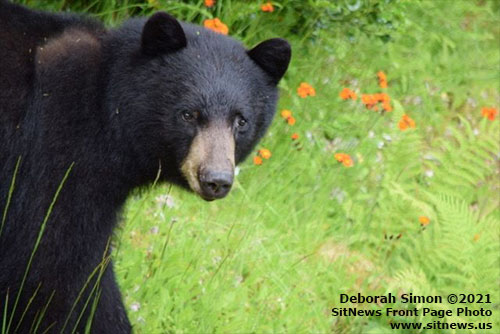
Passing Through
It's not unusual for black bears to wander peacefully through yards.
SitNews Front Page Photo by DEBORAH SIMON ©2021
To have your photo(s) featured on the front page,
email your photo(s) to editor@sitnews.us |
|
Fish Factor: After weeks of inquiries and FOIRs, Governor announces his choice of Board of Fisheries seat By LAINE WELCH - It took freedom of information requests, weeks of queries to administrators and more than three months past a legal deadline for Governor Dunleavy to finally release his choice for a Board of Fisheries seat.
Dunleavy announced on August 27th his appointment of INDY Walton of Soldotna to fill the vacant seat on the seven-member Board that directs management of subsistence, personal use, sport and commercial fisheries in state waters out to three miles. The vacancy came 115 days after the Alaska Legislature on May 11 rejected his choice of Abe Williams, a regional affairs director for the Pebble Mine.
Alaska law states that the governor must submit a new name to the Legislature within 30 days for confirmation, but Dunleavy moves to his own legal drummer and 15 candidates remained under wraps from the public although all applied for the BOF seat in June.
In a statement the governor said Walton has 37 years of commercial salmon fishing experience at both Kodiak and Bristol Bay. He is a partner at Last Cast Lodge in Igiugik and has worked as a financial adviser with Edward Jones Investments for 19 years.
Court records show that Walton was charged with two closed waters fishing violations in 2005 and 2012 although the fines paid weren’t immediately available, reported KSTK in Wrangell. Two Bristol Bay boats, Sniper and Turbo, are registered in his name.
Frances Leach, outgoing director of United Fishermen of Alaska, said in a statement that UFA “is excited” to work with Walton who is “a strong anti-Pebble Mine voice and is spoken of highly by his fellow Bristol Bay fishermen.”
But Representative Bryce Edgmon (I-Dillingham) said Walton’s appointment could be controversial when he’s up for legislative confirmation next year due to his support for scrapping the law that limits Bristol Bay to 32-foot vessels.
“If that’s the case, he’s going to encounter a lot of resistance from year-round residents of the Bristol Bay region. We’ve fought long and hard to keep the 32-foot limit in place. Because otherwise, local fishermen, particularly our village fishermen, would be disenfranchised and wouldn’t be able to compete,” Edgmon told KSTK. - More...
Sundaty PM - September 12, 2021
|
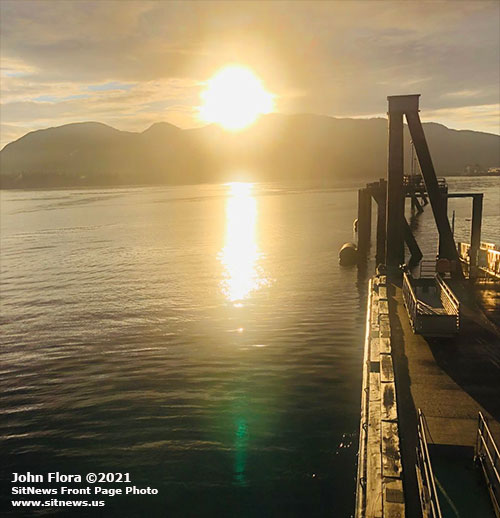
Tongass Narrows: Sunset
Photographed from Berth 4
SitNews Front Page Photo by JOHN FLORA ©2021
To have your photo(s) featured on the front page,
email your photo(s) to editor@sitnews.us |
|
Alaska - Nationwide: Tribal institute releases report examining effects of climate change on Indigenous peoples, lands and culture - Researchers from the Institute of Tribal Environmental Professionals last week launched the State of Tribes and Climate Change (STACC) report, which examines the disproportionate effect climate change has on Indigenous lands and people and the added strain tribes experience as they respond to damaging climate events, which are increasing in frequency and severity.
The STACC report builds on the Intergovernmental Panel on Climate Change report, released Aug. 9. ITEP, which is a tribal institute at Northern Arizona University, brought together with more than 90 authors representing diverse entities and perspectives to create this report, which includes not only research into the effects of climate change but also the voices of Indigenous people who are on the front lines in experiencing and responding to climate disasters.
This report is the first of its kind to be produced in the United States.
“We wanted to change the discourse in this arena and ensure the tribes had their voices and recommendations amplified,” said Ann Marie Chischilly, ITEP director and interim vice president of the Office of Native American Initiatives at NAU. “It’s my hope that the federal government and its partners will take this report and support tribes more directly.”
ITEP’s Tribes & Climate Change Program spearheaded this report by convening the author team including 34 tribal authors who provided personal narratives. Nikki Cooley, the climate program’s co-manager, testified in front of the U.S. House Select Committee on the Climate Crisis in July and shared key findings and recommendations from the STACC report. Those findings include the need for greater meaningful participation of Native American and Alaska Native researchers and communities in future climate assessments as well as looking more closely at the on-the-ground work tribes are doing every day.
“Tribes are investing efforts in adaptation planning and projects to keep their communities, ecosystems and people healthy,” she said. “In doing so, they are implementing the most cutting-edge work on climate. Tribal nations are actively creating climate vulnerability assessments, adaptation plans, and hazard mitigation plans. Protecting traditional knowledges is an important part of these processes. Locally relevant and regionally specific information is needed to understand local climate impacts and develop solutions that incorporate local, traditional and western knowledge for holistic solutions.” - More...
Sunday PM - September 12, 2021
|
|
Alaska: Climate change threatens seal hunting by Indigenous Alaskans By HEATHER MCFARLAND - Climate change has severely reduced the length of the seal hunting season in a rural Alaska village, potentially threatening a key feature of the community’s Indigenous way of life.
The Iñupiaq people of Kotzebue have depended on bearded seals, called ugruk in Iñupiaq, for food and clothing for generations. A new study led by Indigenous hunters, the Native Village of Kotzebue and scientists at the University of Alaska Fairbanks shows that over the past 17 years, the seal hunting season shrank about one day per year. Sea ice decline is a major cause of the shrinking season.
Both ugruk and hunters are closely tied to specific sea ice conditions. In spring, ugruk follow the melting Chukchi Sea ice edge northward during breakup and enter Kotzebue Sound. Inside the sound, ugruk rest on persistent chunks of floating ice, called floes, while feeding on abundant fish, shrimp and clams.
“Kotzebue Sound provides important spring habitat for bearded seals, with ice floes as platforms for seals to rest on between foraging bouts,” said Donna Hauser, marine mammal biologist at the UAF International Arctic Research Center and co-leader of the research. “We learned from our Kotzebue research partners that hunting ugruk is actually like hunting the right kind of ice.”
Hunters safely and predictably found ugruk on these resting platforms in the past. The study combined hunters’ knowledge of the ice conditions needed for ugruk hunting with data from satellite images. The results showed that the necessary ice floes now melt from the Kotzebue Sound roughly 22 days earlier than they did in 2003, the first year of the study.
“We used to hunt ugruk into July when I was growing up back in the 1950s,” said Bobby Schaeffer, a Kotzebue elder, hunter and co-author of the new paper. “People would be out there during Fourth of July celebration because there was so much ice. Now sometimes we’re done before June comes around.”
While the hunting season is pushed to a close about 26 days earlier on average than in the past, hunters are not necessarily able to begin hunting any earlier. The season’s start timing is driven by the arrival of seals and a hunter’s ability to launch boats through a channel in the ice that opens in front of Kotzebue.
Squeezing the hunting season into a shorter window means that there is less flexibility for hunters.
“Now in some years there is only a good weekend or two, and, if people want to maximize their opportunity, they have to prepare before the season even starts,” said Alex Whiting, director of the Native Village of Kotzebue’s Environmental Program and co-leader of the research.
Whiting’s weekly observations of the local weather, ugruk activity and hunting pursuits of Kotzebue residents helped to quantify the shrinking ugruk hunting season.
Whiting said he was inspired to start a journal in 2002 after reading records of Alaska from the early 1900s. - More...
Sunday PM - September 12, 2021
|
|
Fish Factor: Survey Results Indicate Crab Stocks Down Substantially By LAINE WELCH - Alaska’s Bering Sea crabbers are reeling from the devastating news that all major crab stocks are down substantially, based on summer survey results , and the Bristol Bay red king crab fishery will be closed for the first time in over 25 years.
That stock has been on a steady decline for several years and the 2020 harvest dwindled to just 2.6 million pounds.
Most shocking was the drastic turn-around for snow crab stocks, which in 2018 showed a 60% boost in market sized male crabs (the only ones retained for sale) and nearly the same for females. That year’s survey was documented as “one of the largest snow crab recruitment events biologists have ever seen,” said Dr. Bob Foy, director of the North Pacific Fishery Management Council’s Crab Plan Team.
Again in 2019, the “very strong” snow crab biomass was projected at over 610 million pounds, and the catch was set at a conservative 45 million pounds for the 2020 fishery. No Bering Sea crab surveys were done that year due to the Covid pandemic, but the 2021 results indicated the numbers of mature male snow crab had plummeted by 55%.
The stock “seems to have disappeared or moved elsewhere,” said Jamie Goen, executive director of the trade group, Alaska Bering Sea Crabbers (ABSC). The snow crab catch for the upcoming season could be down by 70% and the stock could be classified as “over-fished,” she said, adding that no decisions will be made until the data undergo more scrutiny by plan team and Council scientists.
ABSC estimates the closure of the red king crab fishery and a reduced snow crab catch could cost harvesters well over $100 million. The hit will be felt by roughly 70 vessels, over 400 fishermen, and the processors and fishing communities that rely on the Bering Sea crab revenues.
The crabbers want “bold action” from federal fishery managers. They are calling on the North Pacific Fishery Management Council (NPFMC) and NOAA Fisheries to conserve crab habitat and spawning grounds highlighted by scientists over 10 years ago with little resulting action.
The crabbers also want managers “to create meaningful incentives to reduce crab bycatch in other fishing sectors, to reduce fishing impacts on molting and mating crab, and to estimate unaccounted for bycatch from unobserved fishing mortality from bottom and pelagic (mid-water) trawl nets, as well as pot and longline gears.”
Boats fishing the Bering Sea are required to have 100% observer coverage to track what is retained and what is tossed over the side, but it’s what is not observed that most concerns the crabbers. And what goes unseen is not factored into stock or bycatch assessments.
The Magnuson-Stevens Act, the primary law governing marine fisheries management in federal waters (from three to 200 miles out), defines unobserved mortality as “fishing mortality due to an encounter with fishing gear that does not result in capture of fish.”
In a February letter to the NPFMC , ABSC highlighted studies showing “that 95-99% of crab in the path of trawl gear go under the footrope escaping capture and some portion of those likely die after contact with the fishing gear. Given this number compared to what is observed as bycatch, the potential for unobserved mortality of crab could be millions of additional pounds of dead crab bycatch.”
A February report by NPFMC scientists, which (unsuccessfully) proposed an amendment to the management plan for crab bycatch in the Bering Sea groundfish trawl fisheries, stated: “Crab may actively escape capture from trawl gear, as they can slip under the trawl itself, or over the sweeps, but the damage from the gear results in mortality or delayed mortality due to injuries. The potential for unobserved mortality of crabs that encounter bottom trawls but are not captured has long been a concern for the management of groundfish fisheries in the Bering Sea.” (Witherell and Pautzke, 1997; Witherell and Woodby, 2005).
The report said that “the majority of trawl caught crab PSC (prohibited species catch) occurs when vessels are targeting yellowfin sole. This is the case across all crab species.” - More...
Sunday PM - September 12, 2021 |
PETER FUNT: PAY OR PUNISH THE UN-VAXED? - When society seeks to influence behavior, is it better to pay people to act a certain way, or to penalize them if they don’t? The pandemic and the urgent need for COVID-19 vaccinations brings the question into focus.
American Airlines offers employees an extra day of paid vacation if they get the shots. Delta Airlines, on the other hand, warns employees they will be charged a $200 monthly penalty on their health plan if they don’t get jabbed.
Kroger, the nation’s largest supermarket chain, gives employees $100 for proof of vaccination. But professional basketball players employed by the New York Knicks, Brooklyn Nets and Golden State Warriors learned recently they will not be allowed to play in home games this season if unvaccinated, and face possible fines or loss of pay.
A few companies are literally trying it both ways. Walmart, the nation’s largest private employer, will require employees at its corporate offices to be vaccinated, while making it optional for in-store workers — but offering them $150 if they choose to get the shots.
Much as I applaud the intentions of businesses and governments that offer monetary inducements for getting the shots, I think it’s unwise. We don’t pay motorists to stop at red lights, we fine them if they don’t. Companies don’t give bonuses to employees who refrain from harassing coworkers, they discipline the offenders. - More...
Sunday PM - September 12, 2021
MICHAEL REGAN: AMERICA MOURNED THE ANNIVERSARY OF 9/11. THE TALIBAN CELEBRATED. - As the country sadly marked the 20th anniversary of the 9/11 terror attacks on Saturday, I was thinking about where America was 20 years ago and where it’s headed.
In the weeks and months following the deaths of nearly 3,000 Americans at the Twin Towers in New York City, the Pentagon and Shanksville, Pa., Americans were united in a way it’s hard to imagine today.
Patriotic country songs were written about America and what it stands for – positive, uplifting songs – and everyone in New York City and Washington promised to rebuild the fallen towers even taller.
Politically, we were all singing from the same bipartisan hymnal: We had to strike back quickly and severely punish the Islamist terrorists who did us harm.
Every politician in Washington – even career non-interventionist Ron Paul – called for kicking al-Qaeda’s butt by destroying their training camps and “headquarters” in Afghanistan. - More...
Sunday PM - September 12, 2021
FINANCIAL FOCUS: Help grandkids prepare for the future Provided By BEN EDWARDS, AAMS® - If you’re a grandparent, you don’t need Grandparents Day, observed on Sept. 12, to remind you of the joys of having grandchildren. Yet, you might want to use this day as an opportunity to think about ways to help provide for your grandchildren’s future.
The type of gift or support you provide will be different at various stages of your grandchildren’s lives. Here are a few suggestions:
When they’re born…
• Open a 529 plan. It’s never too early to start saving for college or other types of advanced education. To help your grandchildren meet these costs, you could invest in a 529 education savings plan, which offers potential tax advantages if the money is used for qualified education expenses. If the grandchild for whom you’ve established the account ends up not using it, you can change the beneficiary to a qualified family member of the original beneficiary. (Be aware, though, that a 529 plan could affect your grandchild’s financial aid prospects.) If your grandchild doesn’t go to a college or university, a 529 plan can also pay for expenses related to apprenticeship programs offered through trade and vocational schools and registered with the U.S. Department of Labor. - More...
Sunday PM - September 12, 2021
|

Political Cartoon: The Thinker
by Rivers ©2021, CagleCartoons.com
Distributed to subscribers by CagleCartoons.com

Political Cartoon: Mu (moo) Variant
by Gary McCoy,©2021, Shiloh, IL
Distributed to subscribers by CagleCartoons.com

Political Cartoon: Biden orders Sept 11 declassified
by Dave Granlund, PoliticalCartoons.com
Distributed to subscribers by CagleCartoons.com
(Download the declassified files)

Political Cartoon: Full hospitals
by John Darkow ©2021, Columbia Missourian
Distributed to subscribers by CagleCartoons.com |
Opposition to Proposed Redistricting Plan
By Gavin Hudson, Metlakatla
- I am writing to oppose the dubious plan proposed by the Alaska Redistricting Board that, if approved, would put Metlakatla in the same district as Sitka and Yakutat, while separating us from our closest neighbors, Ketchikan and Saxman. See akredistrict.org/
This begs the question, are there any local interests shared between Metlakatla and Sitka? Sitka is 200 miles away from Metlakatla. That would be like putting Anchorage and Fairbanks in the same district, or putting Seattle in the same district as Eugene, Oregon. That is the same distance as New York City is from our nation’s capital, Washington D.C.
If that sounds extreme, hold onto your seats because this one will really get you, consider that Yakutat is a whopping 565 miles away from Metlakatla! That would be like Anchorage being in the same district as Nome. If that measure was used to draw districts down south, we would have to force Seattle, Washington into the same district as San Francisco, California! That is the same distance as New York City is from Charlotte, North Carolina. What "local" interest could residents of NYC possibly have with those in Charlotte?
Meanwhile, Ketchikan and Saxman, just 15 miles, a stone’s throw, away from Metlakatla, would be separated from us completely. This is especially baffling when one considers that Ketchikan’s economy is tied directly to Metlakatla’s. Ketchikan is our hub, it is where we go for access to shopping, hospitals, eyecare, haircuts, automotive repair, federal offices, U.S. District Court, Ketchikan International Airport, Alaska Marine Highway, not to mention all our friends and relatives, and air taxis and the Inter Island Ferry to our next nearest neighbors on Prince of Wales Island. - More...
Sunday PM - September 12, 2021
 |
Collection of Washington State sales tax
By Douglas Thompson
- I am writing to SitNews about something that affects almost everyone living in Southeastern Alaska who have goods shipped to them by Alaska Marine Lines. That something is the illegal collection of Washington State sales tax on goods trans shipped using AML a registered common carrier. This is currently ten percent of value. The federal law is and always has been very clear in that no state may tax goods going to another state or transiting through that state to another. Yet when you go to a seller in the lower forty eight and order they bring up a web page that tells them to charge sales tax because the item is going to Alaska Marine Lines in Seattle to be shipped to the recipient in Alaska. Washington banks on the fact that few people will redress this charge which can be considerable.
I wrote to complain about this to Senator Lisa Murkowski and after quite some time got the enclosed reply from the Washington Department of Revenue that they sent back to her office. Washington in a very disingenuous fashion claims that "they do not collect the sales tax" (see who comes to your door if you don't remit your sales taxes in Washington?) that it is up to the sellers to do so. However the sellers only have the guidance of the "official" webpage that directs them to collect sales tax if the item is sent to a Washington address. Ignoring completely Federal Law which specifically states any shipment out of state via common carrier is exempt.
Note that you can claim any sales tax illegally collected directly from the Washington Department of Revenue a process most won't endure.
I have asked which Federal Agency is responsible for enforcing the law in this regard and have not received an answer after nine months from Murkowski's office. It used to be the Interstate Commerce Commission but they were 'reorganized' many years ago and it would appear that the job was left unattended thus allowing the State of Washington to engage in illegal conduct with no consequences. - More...
Sunday PM - September 12, 2021
Email letters, opinions, OPEDs to editor@sitnews.us
|
Articles &
photographs that appear in SitNews may be protected by copyright
and may not be reprinted or redistributed without written permission
from and payment of required fees to the proper sources.
E-mail your news &
photos to editor@sitnews.us
Photographers choosing to submit photographs for publication to SitNews are in doing so, granting their permission for publication and for archiving. SitNews does not sell photographs. All requests for purchasing a photograph will be emailed to the photographer.
|
|
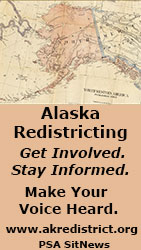












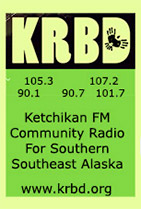
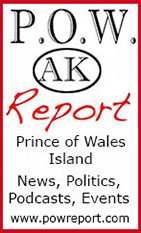

|
|

![]() Contact
Contact ![]()
![]() Webmail
Letters
Webmail
Letters![]()
![]() News Tips
News Tips![]()
![]() Copyright Info
Copyright Info![]() Archives
Archives![]() Alaska
Alaska![]() Ketchikan
Ketchikan![]() SE Alaska
SE Alaska![]() Dave Kiffer
Dave Kiffer![]() Money Matters
Money Matters ![]() June Allen
June Allen![]() Dave
Kiffer
Dave
Kiffer![]() Louise
B. Harrington
Louise
B. Harrington ![]() Ketchikan Links
Ketchikan Links![]() FAA Accident Reports
FAA Accident Reports ![]() NTSB
Accident Reports
NTSB
Accident Reports![]() Court Calendar
Court Calendar![]() Recent Filings & Case Dispositions
Recent Filings & Case Dispositions ![]() Court Records Search
Court Records Search![]() Sex Offender Reg.
Sex Offender Reg.![]() Public Notices
Public Notices![]() Alaska Recall Alerts
Alaska Recall Alerts![]() Recalls.gov
Recalls.gov![]() AST Daily Dispatch
AST Daily Dispatch![]() KTN
Police Reports
KTN
Police Reports![]() Juneau Police Reports
Juneau Police Reports ![]() Today's
Forecast
Today's
Forecast![]() KTN
Weather Data
KTN
Weather Data![]() AK
Weather Map
AK
Weather Map![]() AK Weathercams
AK Weathercams![]() AK Earthquakes
AK Earthquakes






















